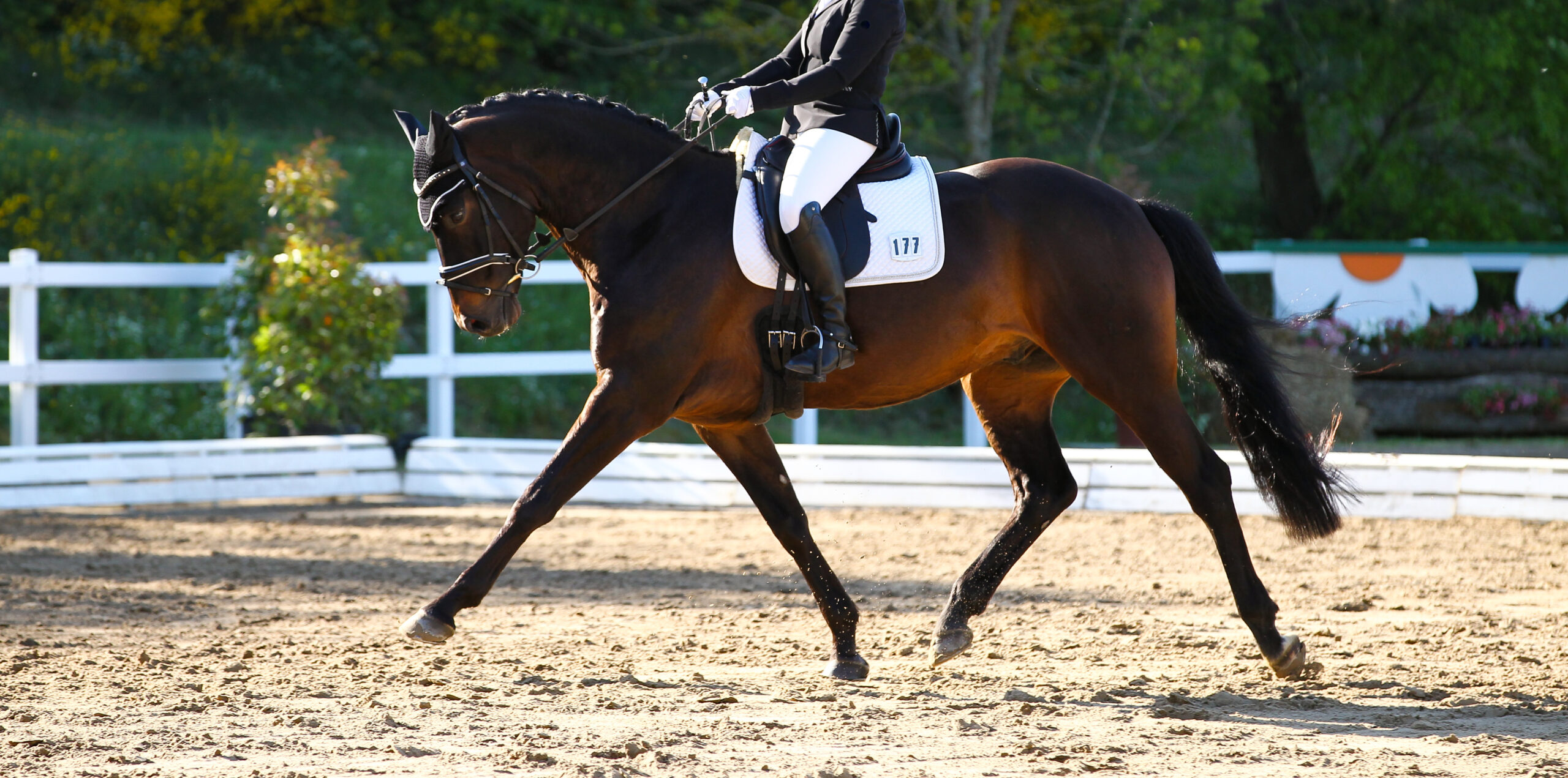Any equestrian knows, the topline refers to the muscles along the horse’s neck, withers, back and loin area. Having a well-developed topline with good muscle tone and strength is crucial for performance horses across disciplines from dressage to jumping to barrel racing. As an equine bodyworker, there are many reasons why you would want to avoid a weak topline. For without strength in the topline the horse will lose self-carriage, suppleness/collection, and most importantly soundness.
The topline muscles play a vital role in allowing the horse to engage the hindquarters and use its back properly. The back acts as a bridge to transfer impulsion and power from the hindquarters up through the loin and into the forehand. Strong topline muscles enable the horse to lift and round its back, working over the hindquarters in self-carriage rather than going on the forehand. Self-carriage and uphill tendency are essential for performance, balance, and lightness.
Horses with weak, underdeveloped toplines tend to be stiff through the back and neck. This makes it very difficult for them to properly collect their stride and bring their hindquarters underneath them. The topline acts like a shock absorber, allowing the vertebrae to flex and extend with each stride. Having good flexibility and suppleness along the topline enables the horse to compress and extend their frame for collection.
The topline muscles support and protect the horse’s spine during the concussive forces of athletic work. If these muscles are weak, it puts excessive strain on the vertebrae and can lead to back pain, kissing spine, and other issues over time. Building topline strength helps reduce the risk of back problems so your horse can stay sounder longer.
So how do you develop topline muscle? Consistent strength training through exercises like hill work, ground poles/cavaletti, and over-topline exercises are key. It’s what our trainers are working on every moment they are teaching. From the ground you can support your horses topline with belly lifts and carrot stretches. You also want to make sure your horse is getting adequate protein in their diet to build and repair muscle tissue. Working with your vet, saddle fitter and equine bodyworker can also identify and address any potential issues impacting topline development.
Investing time into building your horse’s topline strength and musculature pays huge dividends for their long-term soundness, performance abilities, and overall way of going.

